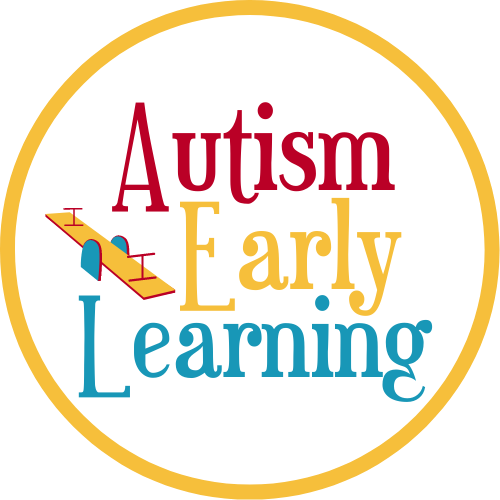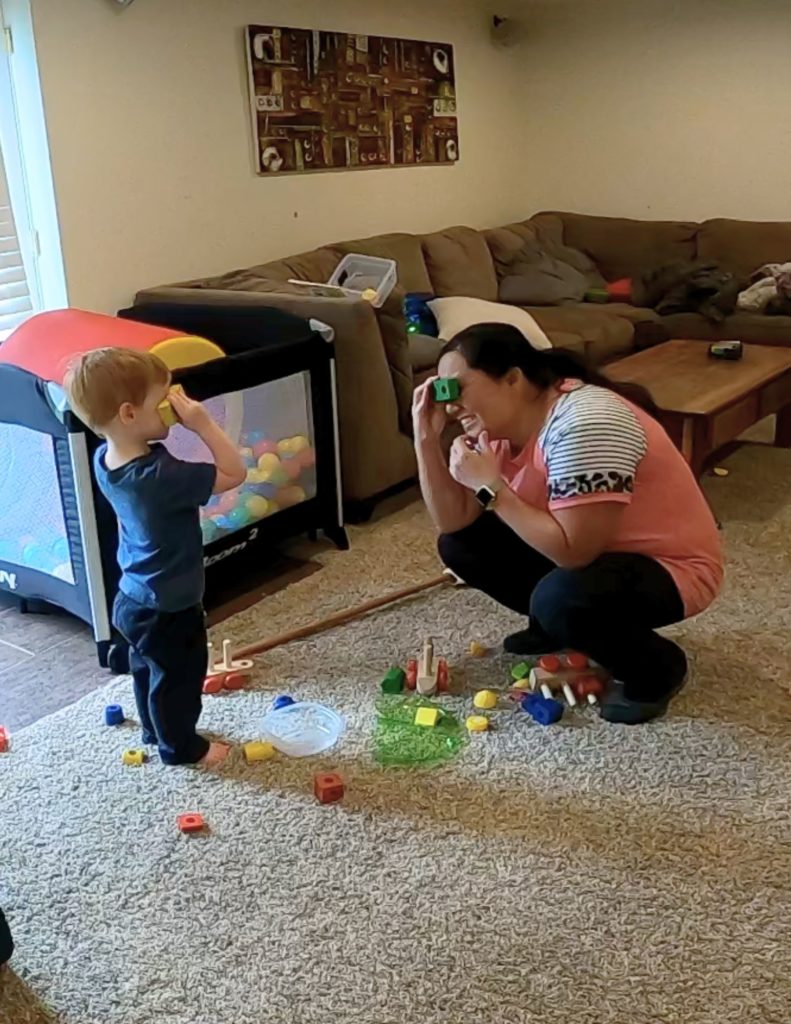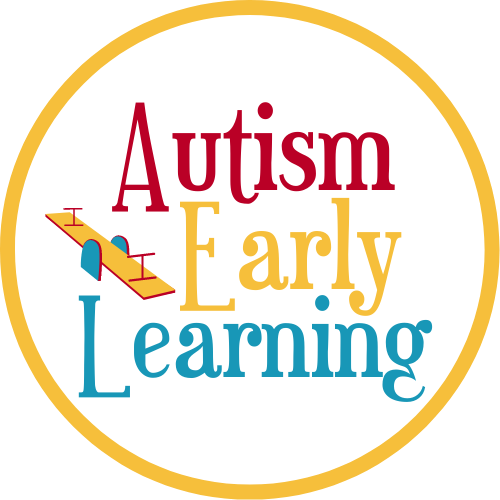Fizzing ice cubes makes for a great preschool science activity, but today I want to talk about using this science activity for eye-hand coordination.
I love activities that can be adapted to target a variety of skills. You can use this activity for cause and effect, color recognition, counting, language skills, fine motor skills, literacy and more!
This is a great activity to pair with academics because it’s highly motivating. Kids love spraying spray bottles, and watching things fizz.
So, let’s talk about eye-hand coordination. When I think about eye-hand coordination often times I immediately think about sports. Baseball, basketball, football, soccer, tennis, golf, they all take a great amount of eye-hand coordination.
What if a child isn’t interested in sports, and may never be interested? Does it really matter? That’s a definite yes.
Eye-hand coordination involves so many things. Think about the things you do on a daily basis that require good eye-hand coordination. That means everything you do that you use your hands and your sight for. Eating, brushing your teeth, tying your shoes, writing your to-do list, unlocking the door, putting on your seatbelt, driving, zipping your coat. So many things.
For some kids the coordination of using your vision and hands at the same time comes pretty naturally. For others it’s something that they may need some extra help with.
If it doesn’t come natural, it may not be fun and easy either. So, finding motivating activities to help your child is important. If you can’t keep your child engaged, it can be hard to target the skill needed.
Now that being said, this activity will obviously be very engaging for some kids and not at all for others. It’s the same for every other activity.
Try it out, adjust it, and just have fun with it. As your child works on squirting the spray bottle to hit the ice cubes and watch them fizz, they won’t even know they’re working. That’s the beauty of play, even though it’s child’s work, it doesn’t feel like work at all.
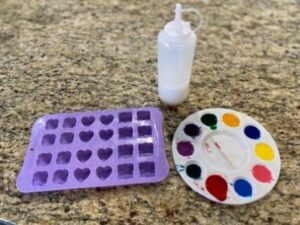
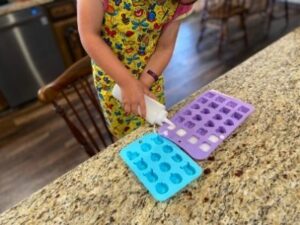

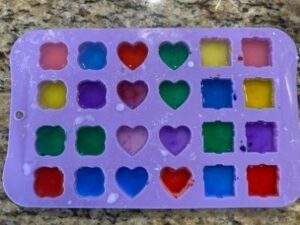

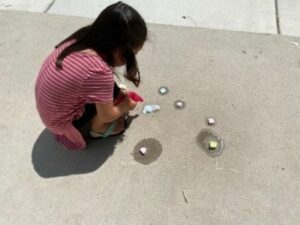
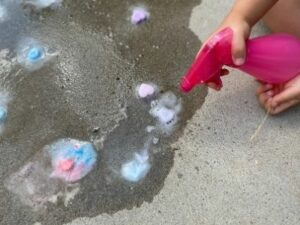
Supplies
- Ice Cube Tray
- Vinegar
- Baking Soda
- Washable Paint or Food Coloring
- Water
- Spray Bottle
Instructions
- Combine equal parts baking soda and water. Add washable paint or food coloring. Mix well (If you like multiple colors, then add the coloring after you put the baking soda mixture in the ice cube tray. Having only one colors saves a lot of time though)
- Pour mixture into ice cube tray
- Freeze
- Pour vinegar into a spray bottle. You may dilute it with water 50% if you’d like
- When the ice cubes are frozen, put them somewhere you don’t mind getting messy (i.e., outside, on a plastic covering, or in a bin)
- Spray the ice cubes and see what happens
Extra Tips & Ideas
- You can create an extra activity by having your child make the ice cubes
- Combine the baking soda and water in a squeeze bottle
- Have your child squirt the mixture into the ice cube trays
- Put washable paint on a plate
- Have your child use a toothpick to put paint in the ice cube tray and stir
Access The Full Tutorial
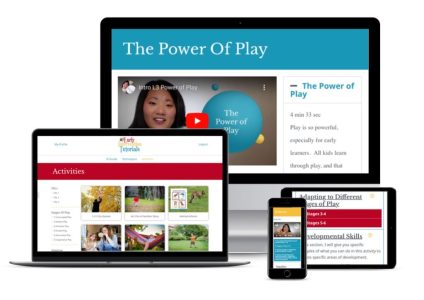
To gain full access to this tutorial and 70+ other activity and technique tutorials, become a member of The Early Intervention Tutorials
As a member of the EI Tutorials, you will learn how to:
- Identify a child’s developmental level
- Understand the stages of play
- Learn how to help a child with limited play skills
- Implement specific techniques to increase communication and engagement
- Adapt activities to different stages of development
- Target specific developmental skills, including: communication skills, cognitive skills, executive functioning, motor skills, social skills, and adaptive skills
Adapting to Different Stages of Play
Depending on a child’s stage of development, you’ll want to adapt this activity based on goals that would be appropriate for the child’s growth.
The stages of play are:
- Stage 1: Unoccupied Play
- Stage 2: Solitary Play
- Stage 3: Onlooker Play
- Stage 4: Parallel Play
- Stage 5: Associative Play
- Stage 6: Cooperative Play
I’ll share ideas on how to do this in the Early Intervention Tutorials. You can become a member and gain access to this tutorial by going to: https://autismearlylearning.com/ei-tutorials-info/
Developmental Skills
In this section, I’ll identify which areas of development this activity targets. I’ll also give some pointers on how to specifically target each area. You can become a member of the Early Intervention Tutorials by going to: https://autismearlylearning.com/ei-tutorials-info/
Download
- Printable Lesson Plan (only available in the Early Intervention Tutorials)
Links
As a Walmart Affiliate, I earn from qualifying purchases at no cost to you.
- Squeeze Bottles-Great for fine motor skills
- Spray Bottle-any kind that can spray in a stream will do
- Washable Finger Paints
- Silicone ABCs and 123 Molds
- Ice Cube Tray-any kind will do
